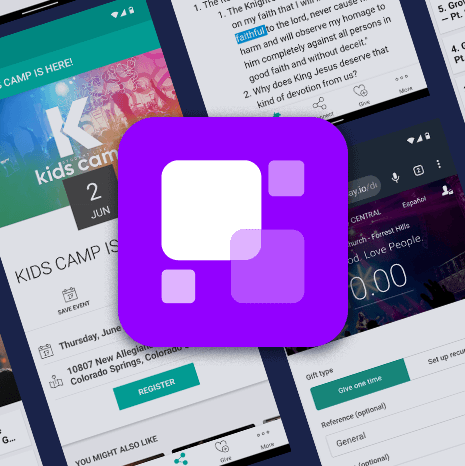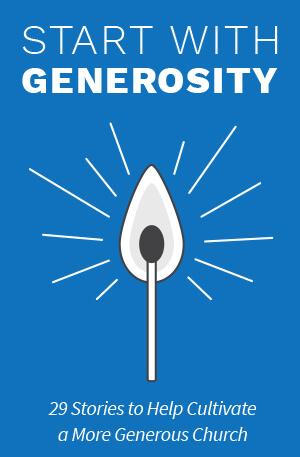FAQs
What is online giving, and how is it different from traditional church giving?
Online giving is any donation your church receives through a digital channel instead of cash or paper checks. That includes gifts made on your website giving page, your church app, text giving, mobile giving, kiosks, and other online giving platforms.
Practically, it changes the how, not the heart, of church giving. Donors can give online tithing, offerings, and other charitable donations from anywhere, at any time, using a debit or credit card, ACH/bank transfer, or other digital options your platform supports. Your fundraising efforts become less dependent on who remembered their wallet on Sunday and more on a simple, consistent giving experience.
Why does my church need online giving if people can still give cash or checks?
Most people no longer carry much cash, and many rarely write checks. When the only way to contribute is in person, givers are limited to whatever is in their pocket at that moment.
When you offer an online giving solution, you:
-
Open more giving options: cash, checks, and digital giving all working together.
-
Support people who miss a weekend: travel, illness, work, or serving in another area of ministry no longer interrupt generosity.
-
Make generosity easier for younger donors: they already pay bills, shop, and support other nonprofits online; church giving can fit naturally into that habit.
Passing a plate can still matter, but online giving platforms help you meet givers where they actually live: on their phones, laptops, and tablets.
What kinds of online giving options should our church offer?
For a healthy church giving strategy, aim for multiple digital giving paths so every person can pick what fits them best:
-
Website or app giving page: a simple, branded page where donors choose a fund, amount, and giving frequency.
-
Mobile giving: giving directly in your church app or mobile browser for people who live on their phones.
-
Text giving: donors text a keyword and amount to your church’s number, then confirm the transaction. Once they’re set up, future contributions are just a quick text.
-
Giving kiosk: a tablet or kiosk in your lobby where people can swipe a card or tap-to-give in person.
-
QR codes: a quick bridge from physical spaces (bulletins, signage) to your online giving platform with a single scan.
All of these can feed into the same online giving platform and donor management system so your team sees one unified picture of generosity.
How does recurring giving work, and why is it so important?
Recurring giving (or recurring gifts) lets a donor schedule an automatic recurring donation that runs weekly, biweekly, monthly, or on another rhythm they choose. Instead of remembering to give every time, they set it once and their ongoing contribution supports your ministry and funds consistently.
Recurring giving matters because:
-
It stabilizes your budget: predictable recurring donations help you plan ministry, staffing, and fundraising campaigns with confidence.
-
It serves busy givers: people who genuinely want to give but forget their cash or get distracted on Sundays can still live out their generosity.
-
It lifts overall generosity: recurring donors typically give more over time and are more engaged in your church’s mission.
Most church giving software will prompt givers to turn a one-time transaction into a recurring gift with a single click.
Can donors choose specific funds or ministries when they give online?
Yes. A good online giving platform lets donors direct their contributions to specific funds and campaigns, such as:
-
General fund: ongoing tithes and offerings.
-
Missions or outreach: local and global ministry initiatives.
-
Building or capital fund: facilities projects or debt reduction.
-
Special fundraising campaigns: youth trips, benevolence funds, disaster relief, or seasonal efforts like Easter and Christmas.
On your giving page or in your mobile giving flow, donors simply pick a fund from a dropdown, enter their gift amount, and complete the transaction. This level of clarity builds trust and helps people feel deeply connected to the specific ministry they’re supporting.
Are online giving platforms secure? How is payment processing handled?
Reputable online giving platforms are built with security at the core. They partner with payment processing tools that follow strict industry standards (like PCI-DSS Level 1) to protect card and bank information, encrypt transactions, and reduce fraud.
Behind the scenes, here’s what usually happens with an online donation:
-
The donor submits a gift through your giving page, app, kiosk, or text giving.
-
The payment processor encrypts the data and routes it through banking networks.
-
The gift is approved or declined almost instantly.
-
Funds are deposited into your church bank account after normal processing timelines.
Your finance team sees each transaction in your church giving software and can export or sync that data into your accounting system or ChMS (church management software) for reporting and reconciliation.
What about transaction fees and monthly fees—do they hurt our fundraising?
Every online giving solution involves transaction fees for payment processing. These usually vary by payment type: ACH is often lowest, then debit, then credit cards.
Most churches handle fees in one of three ways:
-
The church covers all fees: simple for donors, easy to explain.
-
Donors can choose to “cover the fees”: the giving page offers a small optional increase to their gift to offset transaction fees.
-
A blended approach: the church covers some costs, and donors can chip in if they’d like.
For many ministries, increased generosity and recurring giving easily outpace the cost of transaction fees and any monthly fee for the platform. The key is choosing an online giving platform that increases participation, smooths your fundraising efforts, and reduces staff time spent on manual data entry and reconciliation.
Does online giving make tithing feel less spiritual or less intentional?
That’s a common concern, especially for people who grew up physically dropping cash or an envelope into the plate. But the spiritual heart of tithing and offerings has always been about trust, worship, and obedience, not the specific method of payment.
Online giving can increase intentionality when:
-
Donors take time to pray over their recurring donation or fundraising commitment.
-
They set up giving in alignment with payday so generosity is truly “first fruits.”
-
They review their online contributions regularly, talk with family, and adjust as they grow in generosity.
Whether a person gives via text giving, mobile app, kiosk, or check, what matters most is the posture of their heart and their commitment to supporting the ministry God has called your church to.
How can online giving support fundraising campaigns and special projects?
Online giving platforms are powerful fundraising tools for campaigns of all sizes. Your church can:
-
Create specific campaign funds: building projects, renovation, outreach events, mission trips, or benevolence funds.
-
Use pre-configured giving links and QR codes: drop them into emails, social media, print materials, and live-stream descriptions so givers can respond in seconds.
-
Track pledges and progress: use pledge tracking features and dashboards to monitor commitments and actual gifts throughout the fundraising campaign.
-
Celebrate milestones: share updates on your giving page, in your app, and across social media as your community reaches key goals.
Instead of a one-weekend push, your fundraising platform helps you keep the campaign visible and accessible throughout the week for both in-person and online donors.
What kinds of donations can people make through online giving?
Beyond standard one-time and recurring gifts, modern church giving software can receive a variety of contribution types:
-
Online tithing and general offerings.
-
Designated gifts to specific funds or ministries.
-
Campaign pledges tied to fundraising efforts.
-
ACH/bank transfers, debit and credit card donations.
-
In some platforms, non-cash charitable donations such as stock or cryptocurrency.
All of these charitable donations roll into your donor management system, so your staff can see a complete picture of each person’s generosity across funds and giving options.
How are receipts, giving statements, and IRS requirements handled with online giving?
With a solid church giving platform, receipts and statements become much simpler:
-
Immediate receipts: donors receive an email or text receipt after every successful online transaction.
-
Year-end statements: your finance team can generate IRS-compliant giving statements and send them electronically or by mail, covering online giving and in-person donations.
-
Household giving: many systems allow you to group individuals into households so contribution statements reflect family giving accurately.
This saves hours of manual work and gives donors the documentation they need for charitable deductions, while still meeting public charity and nonprofit reporting standards.
How can we help in-person givers transition to digital giving without losing anyone?
The goal isn’t to force everyone into one giving option. It’s to offer multiple paths so every person can participate. A gentle transition usually includes:
-
Clear communication: explain the “why” behind online giving and how it serves your ministry and donors.
-
Simple how-tos: on Sundays, in small groups, on social media, and via email, show people exactly how to use text giving, mobile giving, and your online giving page.
-
Visible tools: place kiosks in obvious spots, print QR codes on seat backs or bulletins, and keep a clear “Give” button in your app and on your website.
-
Respect for preferences: keep receiving cash and checks for those who prefer them, and consider envelope options for people who want a physical reminder but give online.
Over time, many givers naturally move toward digital giving as they see how quick and secure it is.
How does Pushpay support online giving and donor management for churches and ministries?
Pushpay provides an online giving platform designed specifically for churches, parishes, and ministries. With Pushpay, you can:
-
Offer fast, secure online giving on your website, in your church app, via text giving, and at kiosks.
-
Support one-time gifts, recurring giving, future-dated gifts, and fundraising campaigns in one place.
-
Track cash, checks, digital gifts, and non-cash donations together with robust donor management tools and giving analytics.
-
Integrate giving with your ChMS and apps through ChurchStaq or ParishStaq, so giving data, attendance, and engagement live in a single platform.
All of that adds up to a simpler, more connected giving experience for your donors and a more strategic, insight-driven approach to generosity for your leaders.








